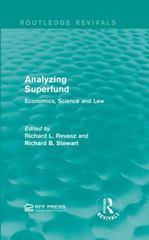Answered step by step
Verified Expert Solution
Question
1 Approved Answer
A city funds its public good provision solely from voluntary contributions from its two residents, Mr. A and Mrs. B. The total amount of spending
A city funds its public good provision solely from voluntary contributions from its two residents, Mr. A and Mrs. B. The total amount of spending on public good is equal to the sum of private contributions on public good, gA and gB, divided by the marginal cost of public good: G = (gA + gB)/c. Assume that the marginal cost of producing public good is equal to 1 unit of income and thus we can simplify the formula for the total level of public good spending to just the sum of individual voluntary contributions: G = gA + gB. It is known, from the income tax records, that A's income is mA = 100, B's income is mB = 1000. Each of the two residents has a unitality function that shows preferences over a public good, G, and a private good, z: U(zA, G) =0.3ln(zA) + 0.7ln(G) and U(zB, G) = 0.8 ln(zB) + 0.2ln(G). Compute the best-response (also known as the reaction function) of Mr. A. if the derivative of his utility function with respect to his voluntary contribution to the public good is given by U/gA= - 0.3/(100 - gA) + 0.7/(gA + gB). A. gB = 70
Step by Step Solution
There are 3 Steps involved in it
Step: 1

Get Instant Access to Expert-Tailored Solutions
See step-by-step solutions with expert insights and AI powered tools for academic success
Step: 2

Step: 3

Ace Your Homework with AI
Get the answers you need in no time with our AI-driven, step-by-step assistance
Get Started


